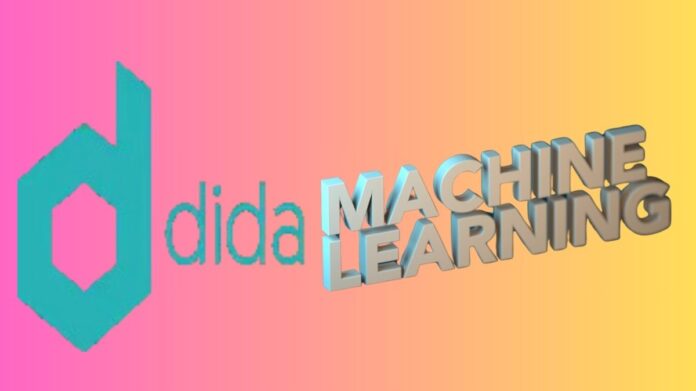Dida machine learning
The gap between what businesses require from machine learning (ML) solutions and what off-the-shelf, blackbox products can offer is widening in tandem with the business desire for complicated automation. Dida specialises in creating unique AI solutions for businesses ranging from medium-sized to huge. Their highly skilled team, who have degrees in physics and mathematics, is skilled at approaching complicated issues abstractly in order to provide Their clients with advanced, practical AI solutions. Additionally, because Their solutions are explainable due to their modular design, businesses can clearly see what is happening at every stage of the process.
Future energy compared to historical bottlenecks
They successfully utilised Their special blend of machine learning and mathematics expertise when They developed a custom AI solution using Google Cloud to automate a portion of Enpal’s solar panel sales process. Enpal, the first greentech unicorn in Germany, was experiencing a time of tremendous expansion due to the growing demand for environmental sustainability solutions in the country.
Enpal required a more effective method of producing bids for potential solar panel buyers in order to maintain this growth. During this process, a salesman would manually count the number of roof tiles to determine the size of the roof, estimate the roof’s angle, then input a satellite image of the customer’s rooftop into a desktop application. The salesman would then determine how many solar panels the customer would require using this estimate before building a mock-up to depict the solar panels on the roof.
One salesperson needed 120 minutes to do the entire procedure, which made it challenging to scale as the company expanded. It was also prone to error due to the laborious counting of the roof tiles and the imprecise estimation of the roof’s angle, which resulted in erroneous cost and energy production estimates. Enpal intended to create a unique artificial intelligence solution to automate the procedure, lowering inefficiencies and raising accuracy. Enpal came to us because they realised they needed Their blend of mathematical problem solving and AI experience.
Effective training of strong machine learning models
At dida, They build Their solutions on Google Cloud whenever possible, but They are platform neutral to meet specific customer requests.Cloud is a cheap, easy-to-use platform with several AI development tools. Since They only pay for the services They use, the price model is affordable. They created a modular, understandable solution by segmenting the process as They developed Enpal’s solution into a number of smaller parts. Nearly every stage of the process involved the use of Google Cloud products.
Getting enough rooftop photos or data to create a strong machine learning model was the first step. To train the model, They collected pictures of rooftops in a variety of sizes and forms using the Google Maps Platform API. They managed costs by using automatic storage class transitions while storing all of these photographs in Cloud Storage.
They used these pictures to create a baseline model in order to validate the idea. In order to do this, the model had to be trained to recognise the difference between rooftops and other features, as well as where skylights and chimneys would make it impossible to install solar panels.
They ran experiments using a CI/CD workflow in Cloud Build while They constructed the model, modifying parameters to create a functional working model. They were able to maintain a continuous development cycle by using Cloud Build, which improved process efficiency and allowed us to construct Their baseline model in just four weeks.
Applying a theoretical framework to practical issues
Then, it took some effort to figure out the proper formula to determine the roof’s south-facing side angle. In order to do this, Their team used projective geometry and its mathematical problem-solving abilities to create a model that could determine the correct angle from roof images submitted by potential clients. They created an automated procedure to determine the roof area by combining this mathematical technique with the ML model. They then added two more phases to this process: one to determine the required number of solar panels and another to visualise their placement on the roof.
During the ML model-training process, they employed Compute Engine and added GPUs to Their virtual machines to expedite workloads and provide high availability. They could easily scale Their utilisation up or down with Compute Engine, so They were only charged for the compute power They actually used. TensorBoard allowed us to keep an eye on each individual training session while They refined Their model, which allowed us to evaluate the model’s performance.
Automating the procedure to achieve a quicker, more precise sales process
After a six-month development period, Enpal developed a customised, automated solution to swiftly and easily determine the size of a roof and the necessary number of panels. Additionally, because the solution was modular, Enpal was able to manually modify specifics along the route, such a roof’s exact proportions, to guarantee the conclusion was as accurate as possible.
This allowed Enpal to have good visibility into how the system was operating. They measured the accuracy of rooftop detection using a performance metric known as Intersection over Union (IoU). They attained an IoU of 93% during model training, optimisation, and post-processing.
Using the help of Their solution and the effectiveness of constructing it using Google Cloud, an Enpal salesperson can now complete an automated procedure in just 15 minutes as opposed to the previous manual method that took 120 minutes, a decrease of 87.5%.
Thirteen employees of Enpal were utilising the software when They first started working on it. After four years, this has increased to 150 Enpal workers, who are now able to save 87.5% of their time for other, more specialised jobs. As a result of the model’s increased accuracy, consumers receive quotes with fewer errors, which speeds up the sales process and enhances the customer experience.


